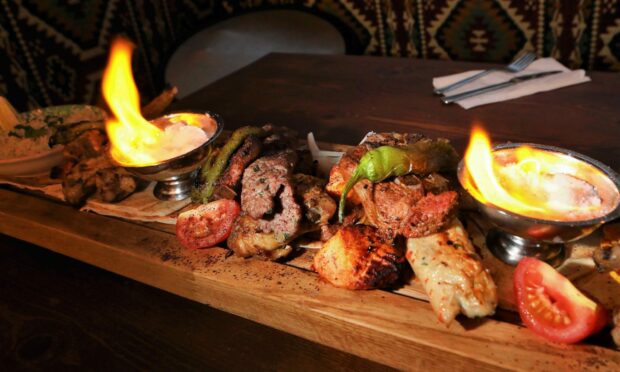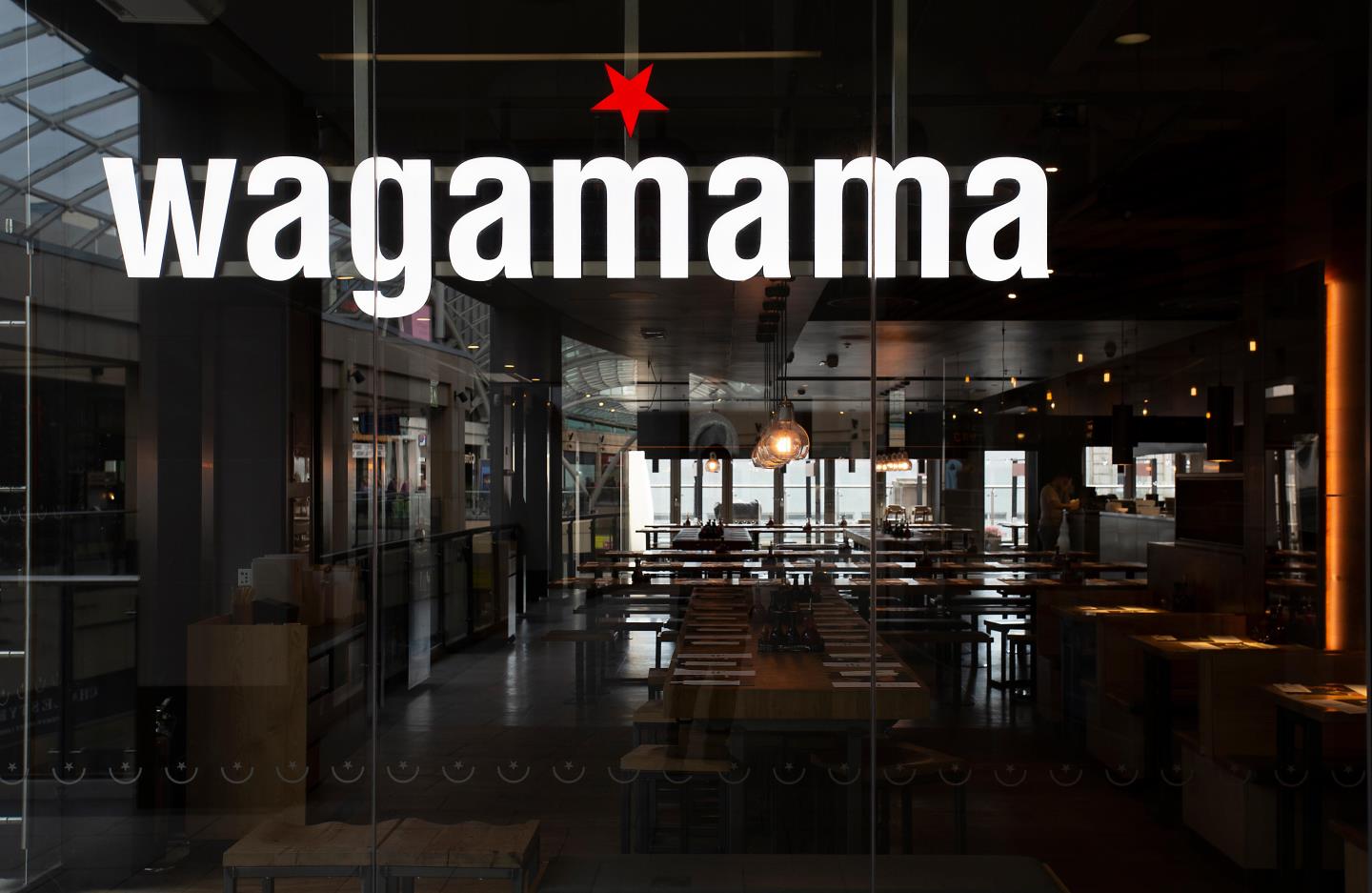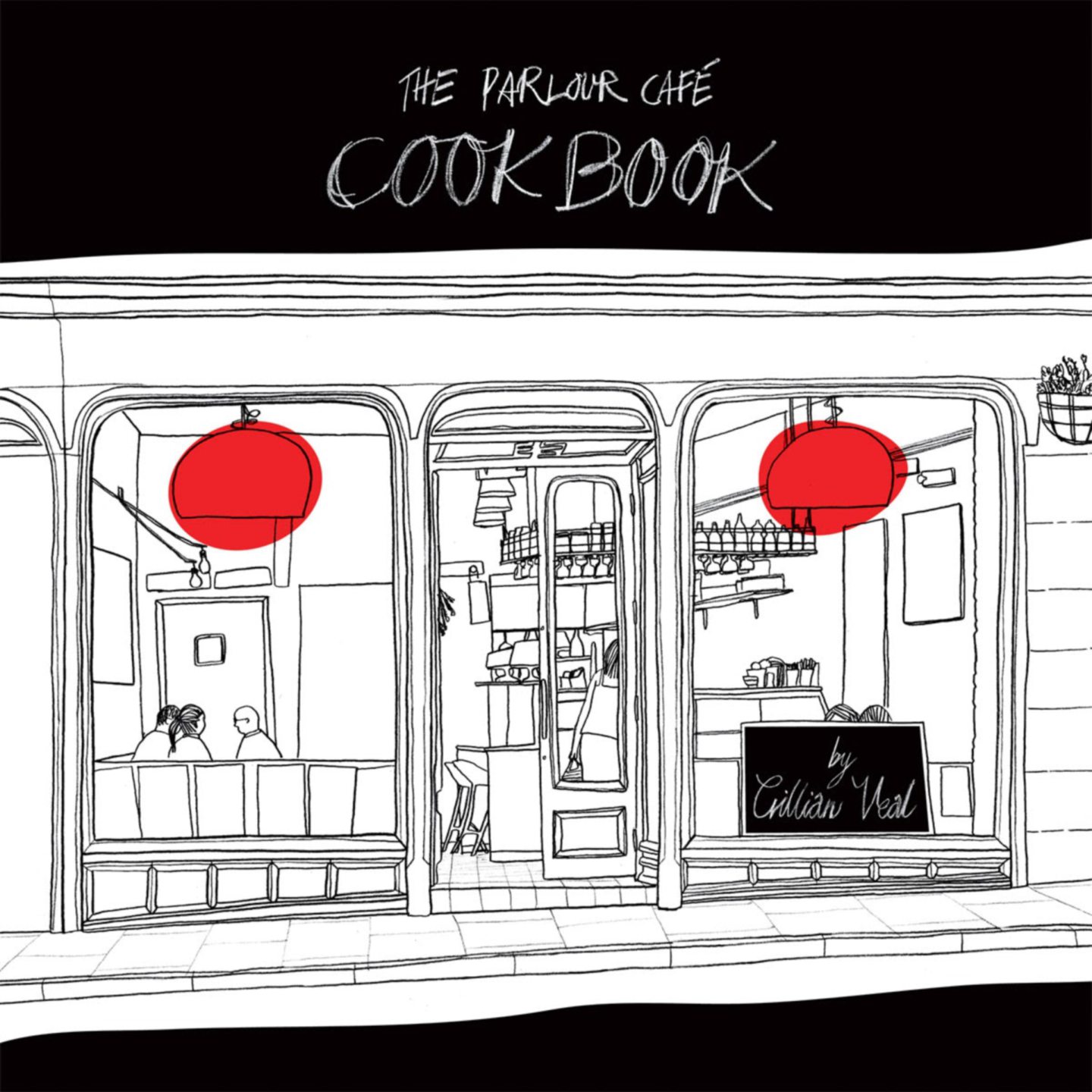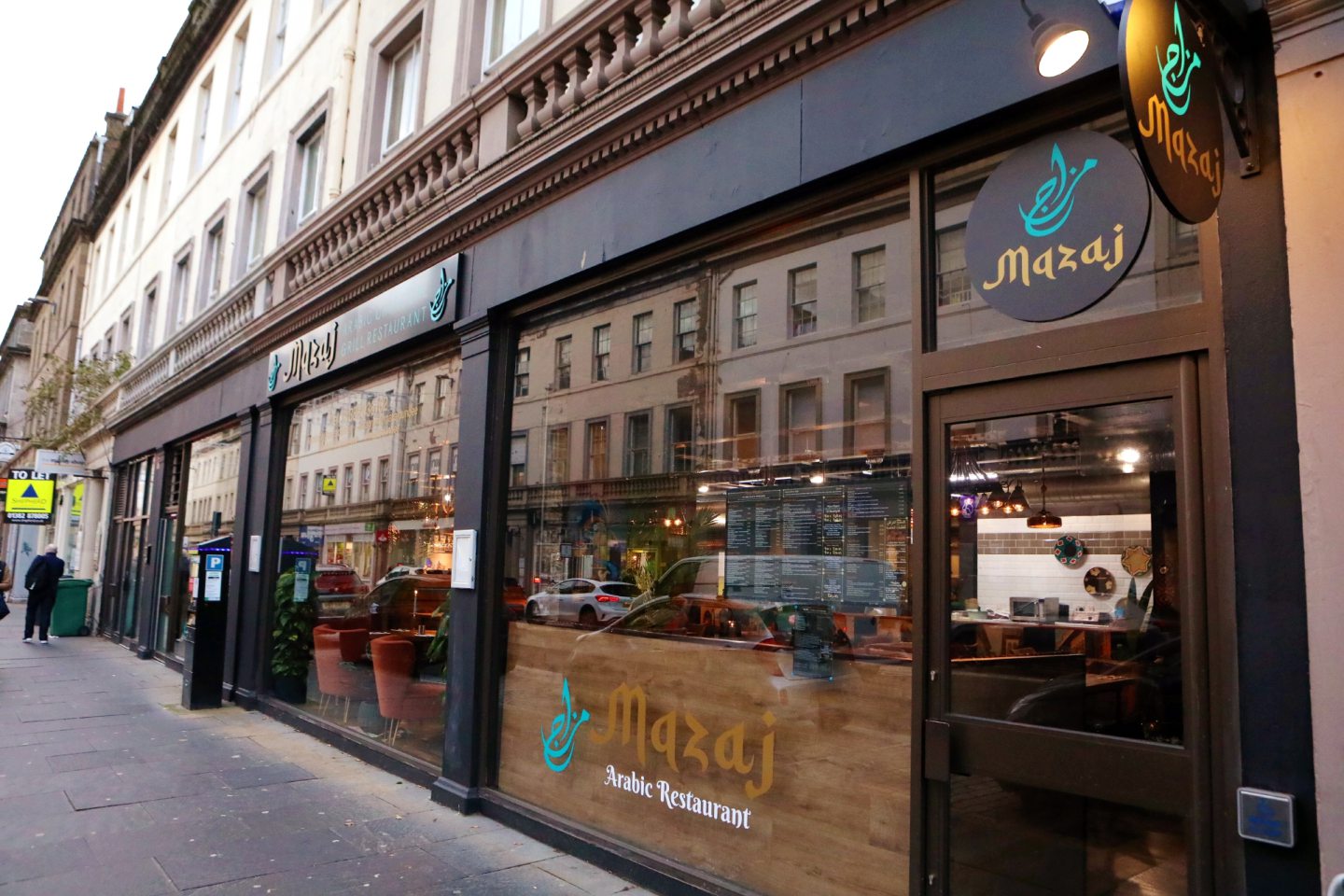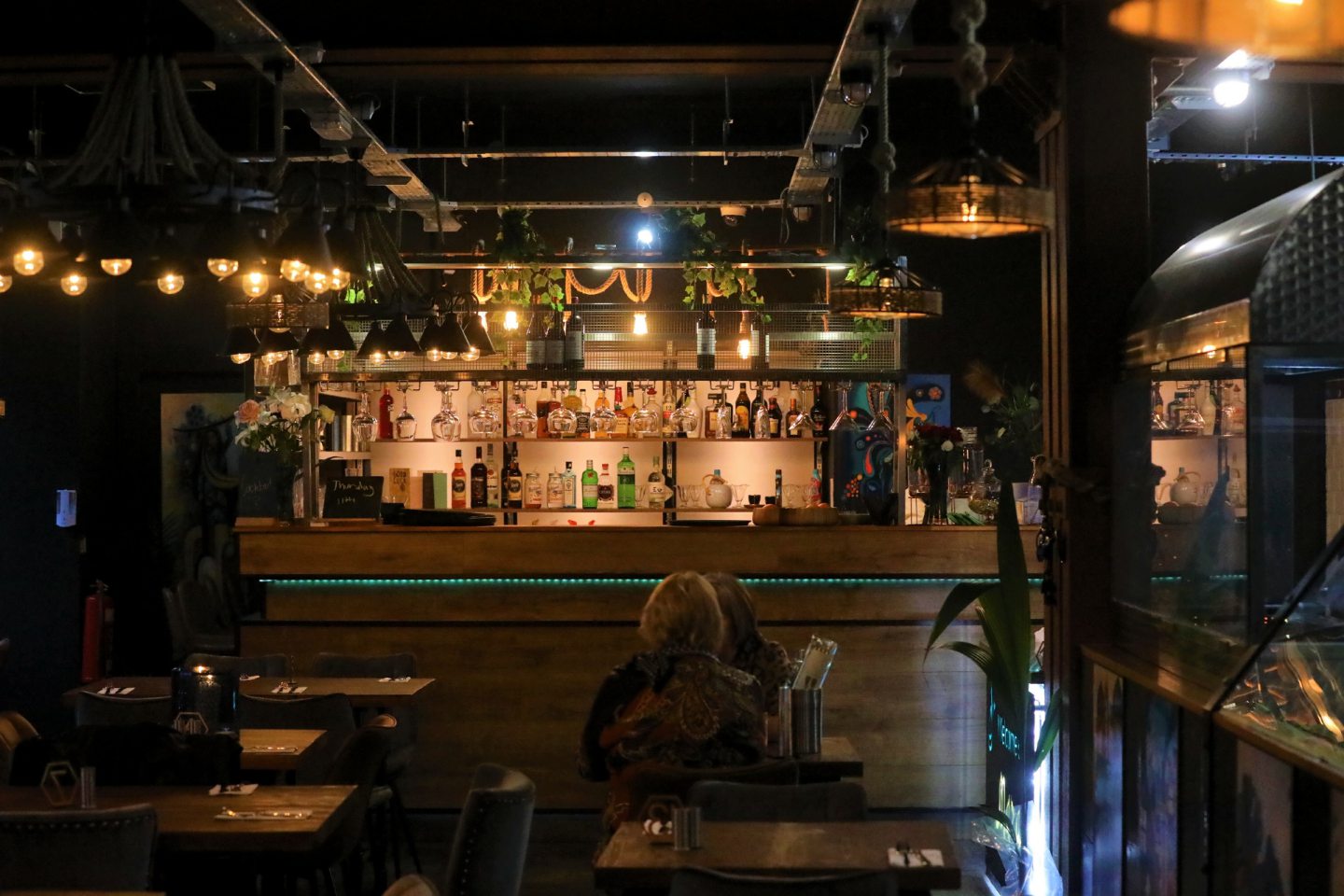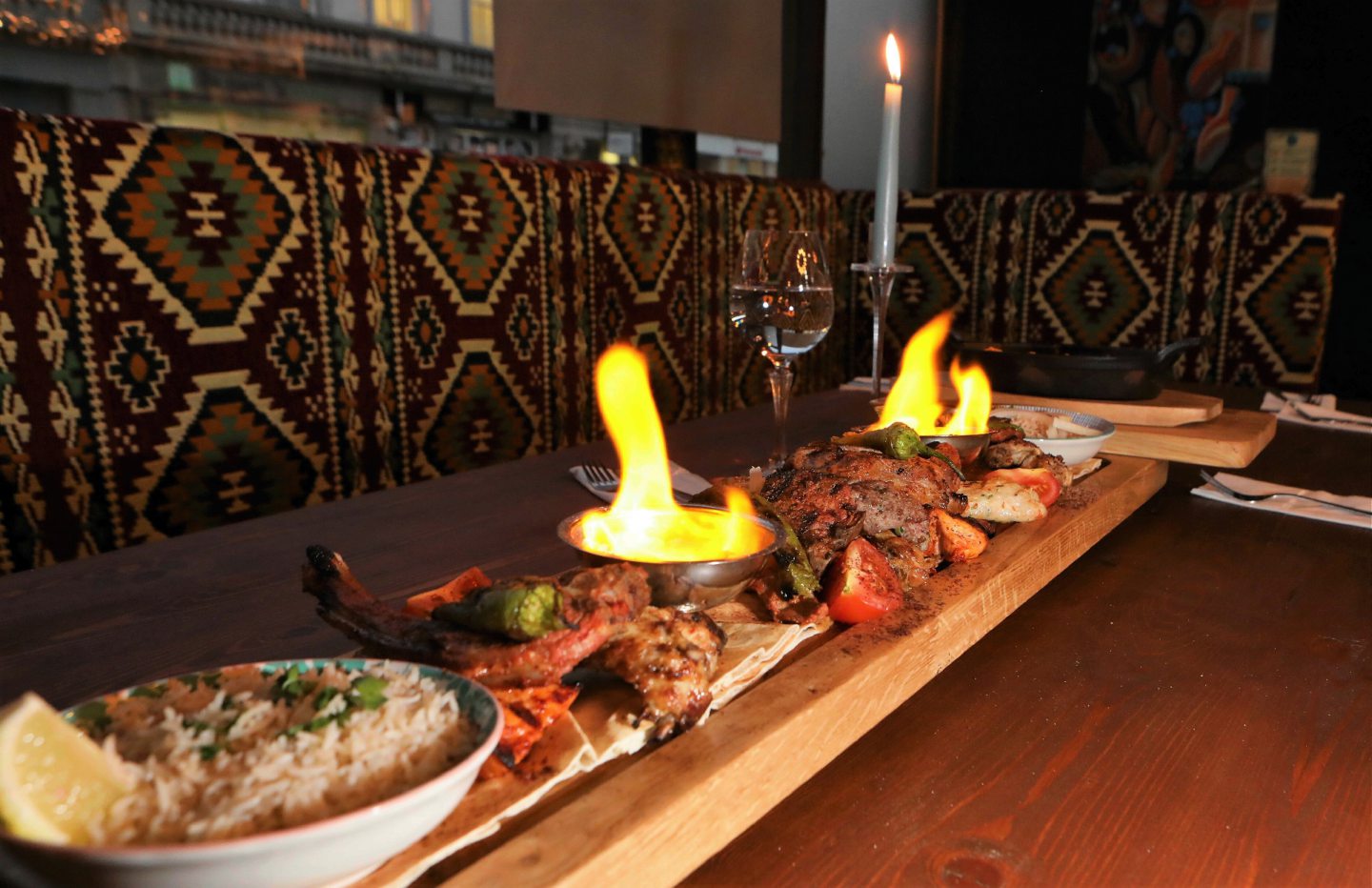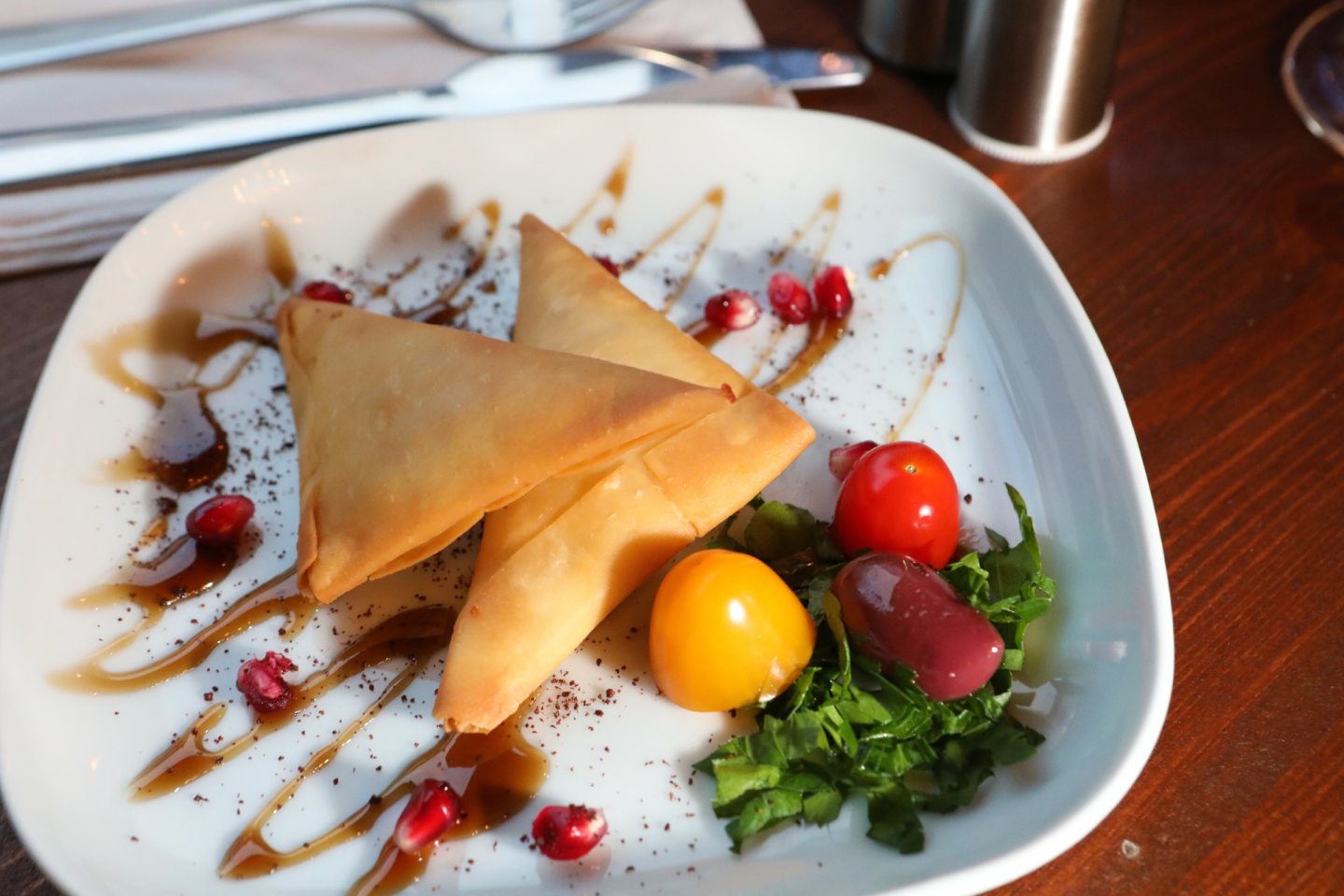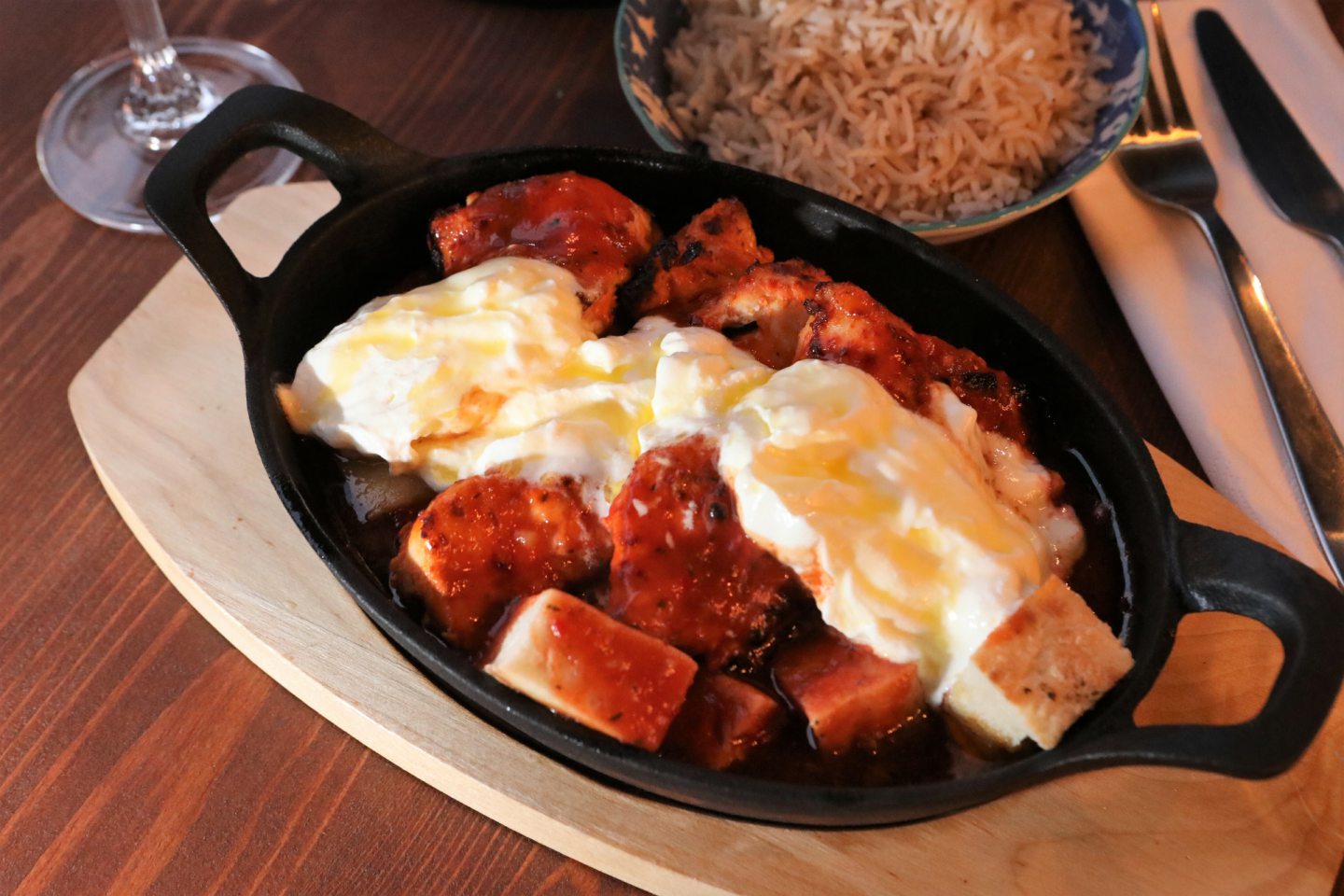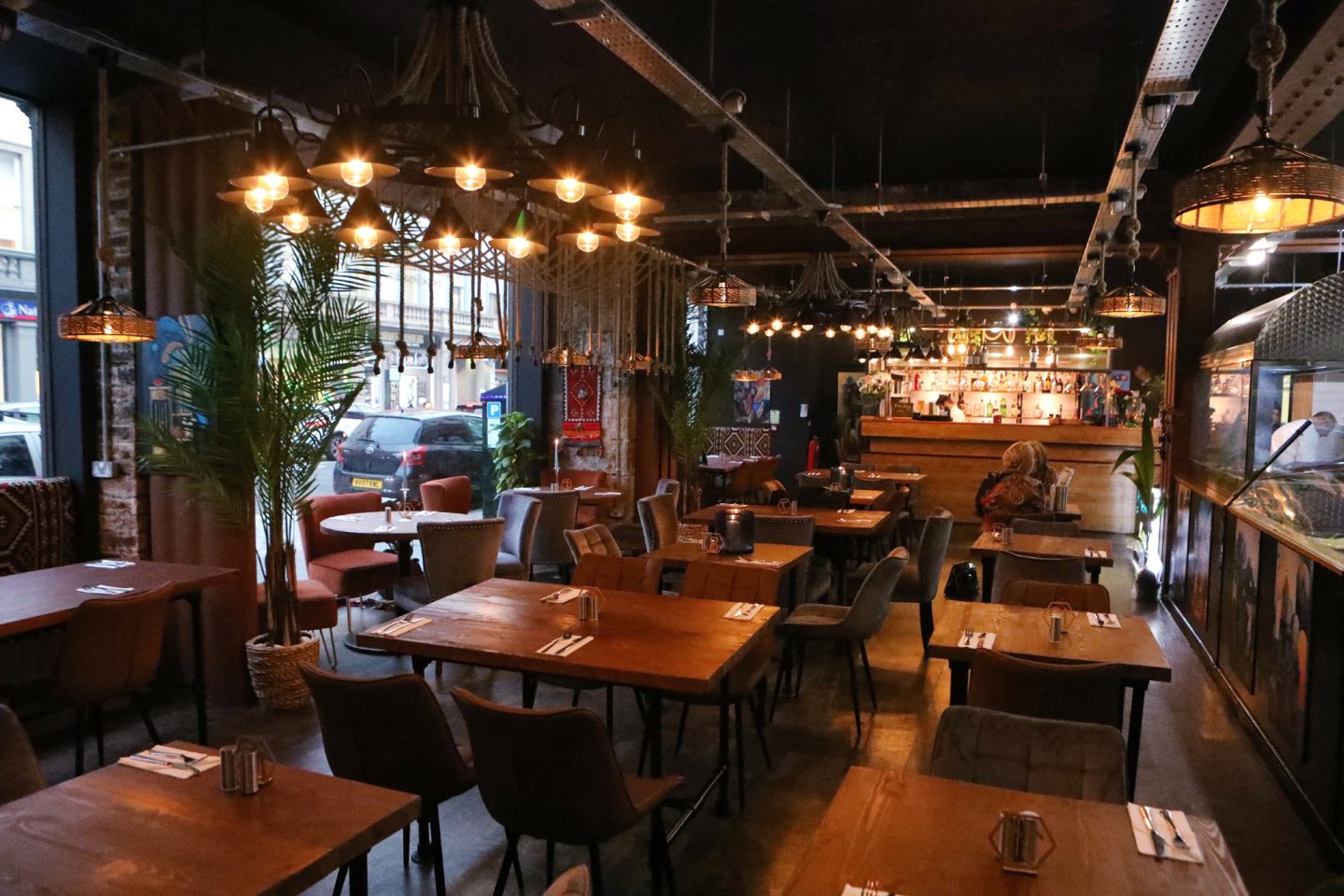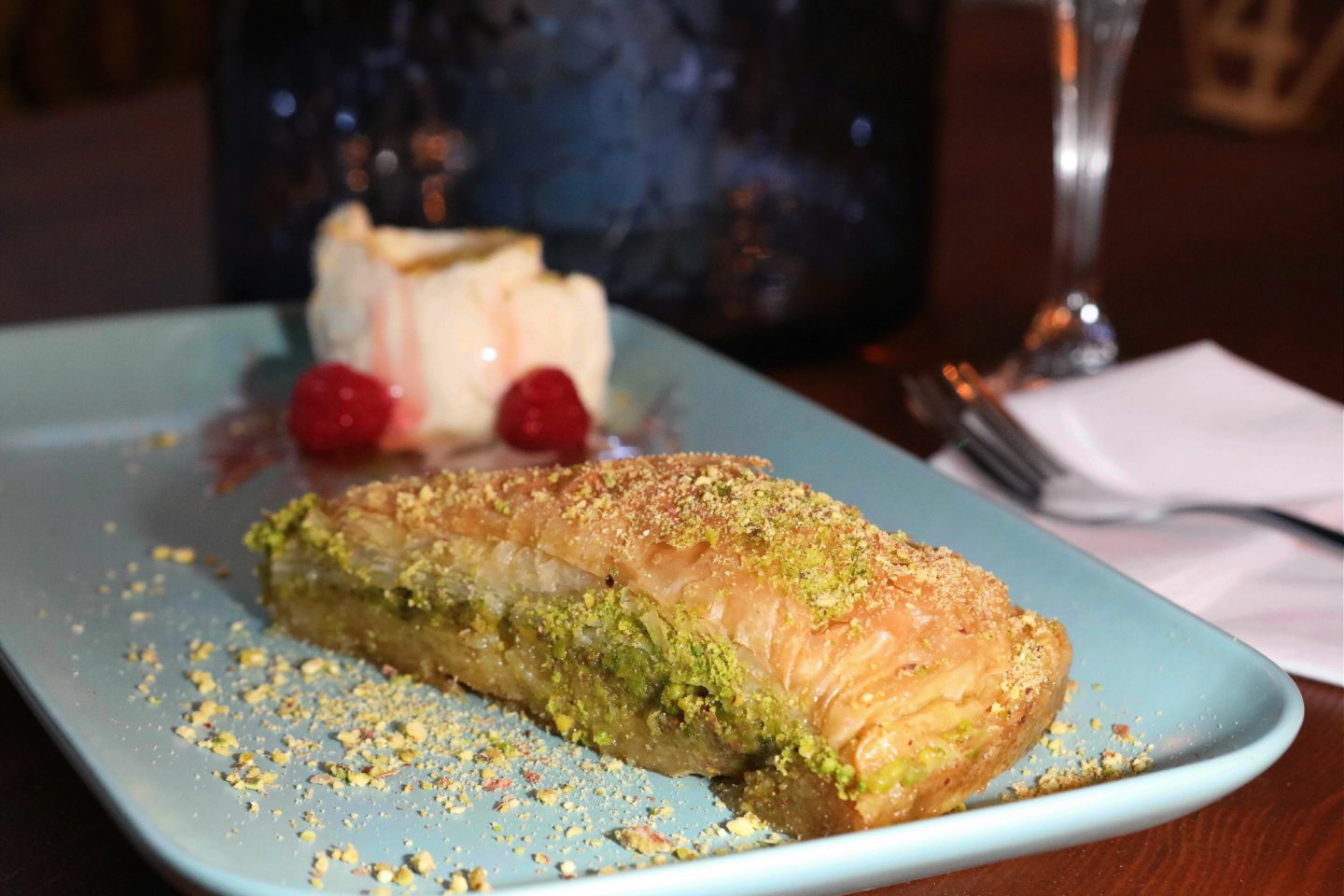News that the restaurant Mazaj has opened on Dundee’s Reform Street is welcome in so many ways, not least because if I see another damn coffee shop open on this beautiful yet beleaguered street I swear I will bounce from the walls of Boots emboldened by an extra shot of caffeine rage.
What is it with Dundee and coffee shops? And fast food joints? Haven’t we got more than enough places serving overly-sweet pastries and over-priced oat milk lattes?
(Having said that there is an excellent coffee shop, Coffee & Co, yards from this new restaurant, the exception that proves the rule.)
I’m afraid all this sugar on offer in Dundee has now made me run a mile when I see the words “tray bake”, knowing it would take more of a marathon than a sprint to offload those unwanted empty calories.
If this city is to be seen as outward looking then we have to stop pretending that we should feel joyful just because we can buy a fresh donut and a yum yum in the centre of town.
It’s really quite dispiriting to see new ventures open in Dundee with lofty ambitions and menus that try to move things forward – and then slowly, inexorably, they get reduced and reduced until we’re left with a uniform product that we could get in many other places in town.
Part of this is market forces (and of course those are especially skewed right now as businesses struggle to stay afloat and many customers struggle to feed themselves) but part of it is, I think, a lack of vision.
Among many other things Dundee is a student city and yet where are the healthy, inexpensive places for students and the rest of us to eat? Why is it that any noodle bars we get aren’t a patch on even a Wagamama – a chain that consistently gets it so right?
Why is it that most places that open here seem like facsimiles of great originals but reduced to the lowest common denominator? Why do so many places here just choose to do the same old thing?
There are exceptions, most markedly led by my friend Gillian Veal with her revamped and joyfully trailblazing Parlour Cafe, where fashion designer Pam Hogg and I recently enjoyed a brilliant lunch of soup, a tart and the freshest of salads for £8 each.
The Parlour is still my go-to place in Dundee for a healthy, nutritious, delicious lunch.
There should be more.
Back in Reform Street, the Christmas lights had just gone up the evening we visited Mazaj, a fact that filled me with unbridled joy. Reform Street is such a wonderful street – if you ignore the tackiness of many of the shop fronts.
Opened in 1833 and named after the Reform Bill (Arthur Wellesley, the Tory prime minister in 1830, was resolutely opposed to parliamentary reform, and even naming this street in Dundee proved contentious), Reform Street feels spectacular despite the many “to let” signs.
Every time I walk up this once-grand street towards Dundee High School I’m filled with a mix of wonder and despondency, thinking what the hell happened to the architecture of this great city of ours?
I guess the modern terminology for much of what happened might be “sleaze” – don’t dare say the word “corruption” – and yet we should at least be thankful that this handsome street survives, even if it’s now dominated by the behemoth McDonalds.
Mazaj is situated towards the far end of Reform Street, where the beauty of the McManus shines brighter than any phosphorescent Big Mac ever could.
I didn’t visit this site in its previous incarnation as Project Pizza so have no idea what the interior was like, but I believe extensive renovations happened before Mazaj opened their doors.
A brand-new kitchen was installed and the dining space was reimagined.
Now it’s a very pleasing mix of ethnic fabrics, simple furniture, naïve Arabic paintings and lights hanging from ropes. The kitchen is open, spans much of the length of the restaurant and is dominated by a huge grill.
Ducts and pipes are left exposed, a juxtaposition with the ethnic décor that was probably borne as much from pragmatism as from style.
It looks welcoming, feels warm and thus far away from the twilit reality of a Scottish city approaching a hard winter.
I loved the fact that my seat faced the kitchen and so I could see everything going on.
There’s something reassuring about that – and also, who doesn’t like to snoop?
A bar sits at the far end of the room, with a proper dedicated barman.
This layout and feel reminded us quite a bit of the Meze Grill in Broughty Ferry, and the menu here reminded us even more so – it was no surprise when a chat with Sadiq, the chef-owner of Mazaj, revealed that he used to be the head chef at the Meze Grill.
While much of the menu is similar to dishes at the Meze, presumably created by Sadiq anyway, the menu here is more expansive and spreads the Middle Eastern offering into a few different countries – indeed the online menu describes this place as Mazaj Arabic Charcoal Grill.
Tajines and aubergine stews are also a welcome step into Morocco.
We stuck to the basics of a good meze selection for our starters, although I have to say I don’t always like to eat in the traditional starter-main-dessert manner when eating food from this extensive region, so gloriously culturally and culinarily different from our own.
The food
For this first visit though we were keen to sample as much as possible and so we ordered five dishes from the meze menus. They were all marvellous.
Hummus was just the right balance of tahini, oil, garlic and lemon juice. Served with delicious flat bread, it made a mockery of even the pretty good hummus I make at home, even when produced with labour-intensive boiled chickpeas – so arduous a task that my 1970s pressure cooker threatens to combust in a hissy fit.
Tabbouleh was fresh and delicious, zesty from the lemon and parsley and rich and earthy from the bulgur wheat and olive oil. Great stuff.
Mixed olives with more of that deliciously homemade flatbread were notably good – and what a delight not to have that new cliché, the Perello olive, served here!
These olives were deeply resonant of sunnier climes, with exactly the right balance of sweet and bitter, wet with oil instead of brine.
The cacik (Greek yoghurt with cucumber and herbs) was also great, a fresh, pungent hit of lactic acid, herbs and cucumber that was both simple and deeply satisfying. The cheese borek, our last part of the meze starter, were little filo parcels of joy.
All the meze dishes we ate were £4.95 although some, like the chicken wings marinated in spice, and the lamb kofta risa balls, are £5.25.
Our selection above would also have made the most delicious light lunch.
My main course was the Iskender shish tavuk (£15.95) and I ordered it because I asked the charming waitress what she would choose from the menu.
Of course she said everything was good but then shared that her personal favourite was this buttery, fragrant chicken dish “covered in our special sauce”, and served anointed in yoghurt and aside the most deliciously flavoured rice, subtle with the taste of cinnamon.
This dish, a derivation of the traditional marinated chicken shish kebab of Ottoman cuisine, was rich and so deeply satisfying, not least because it also included cubes of bread in its midst.
It’s a particular characteristic of Middle Eastern food to use bread in this way and this mix of marinated chicken, rich tomato sauce and bread retexturized by the liquid was both heartening and moreish.
It’s particularly heartening to see here that portions are good but fairly regular sized, which means you don’t have that daunting feeling of over-indulgence and inevitable waste. Presentation is simple, home-style and just right – even the mismatched bowls that the meze dishes are served in seem wholly appropriate.
David was thrilled to see that there is an extensive array of vegetarian options here but, contrarian that he is, he chose the same dish he’s ordered when we visited the Meze Grill in Broughty Ferry.
There is a separate section of the menu just for vegetarian main courses, including a delicious-sounding dish of vegetable Quzi Sham (£14.95) which consists of rice, green peas, carrots, potatoes and spices wrapped in pastry. An aubergine stew (£12.95) sounds equally delicious.
David’s halloumi kebab (£12.95) is described as “grilled halloumi with rice and salad”, a simple description that belies the taste of this dish.
Three pieces of halloumi, more of that wonderful rice, delicious pickles and two sauces later, David reluctantly admitted defeat with two halloumi segments left – he took the leftovers home, along with some of that superlative bread which I announced was mine anyway since I was paying the bill.
Service here is charming and even though I feel weird saying it, there was something completely wonderful about the fact that the kitchen is staffed by three female chefs.
Should this be something to mention in 2021?
Of course not, but the fact is that restaurant kitchens, so often places of testosterone and braggadocio, need to find a balance of energies and approach and I have to say that this kitchen seemed to run on a very quiet sense of confidence that was heartening to witness.
Dessert was a wonderful baklava (£5.50), quite the biggest I’ve ever seen, and basbousa, a traditional Ottoman sweet semolina cake served with vanilla ice cream (£5.50).
The verdict
Mazaj brings something new to the heart of Dundee.
The food is authentic, delicious and reasonably priced. Service is exemplary, and the surroundings are attractive.
Along with Tahini round the corner in Bank Street it brings a feeling of different cultures and cuisines to the city. A big hit!
Information
Address: Mazaj, 48-54 Reform Street, Dundee DD1 1RX
T: 01382 936 102
W: instagram.com/mazajdundee
Price: Starters from £4.95, mains from £14.95 (pizzas from £8.95 but really, why bother?) and dessert from £4.95
Scores:
- Food: 5/5
- Service: 5/5
- Surroundings: 4/5
